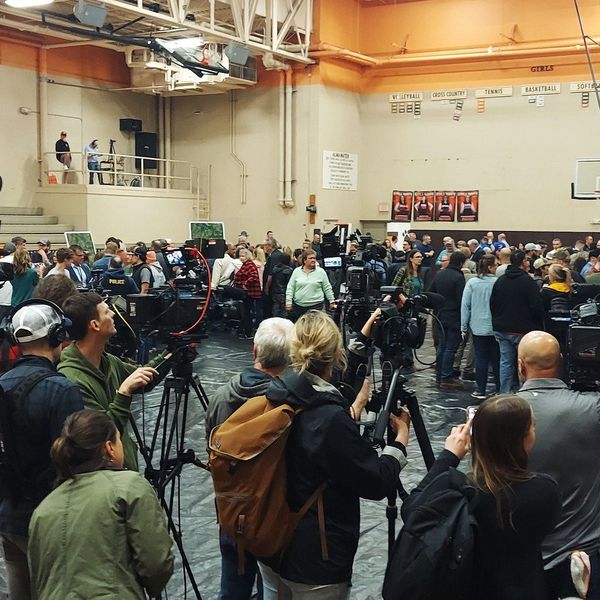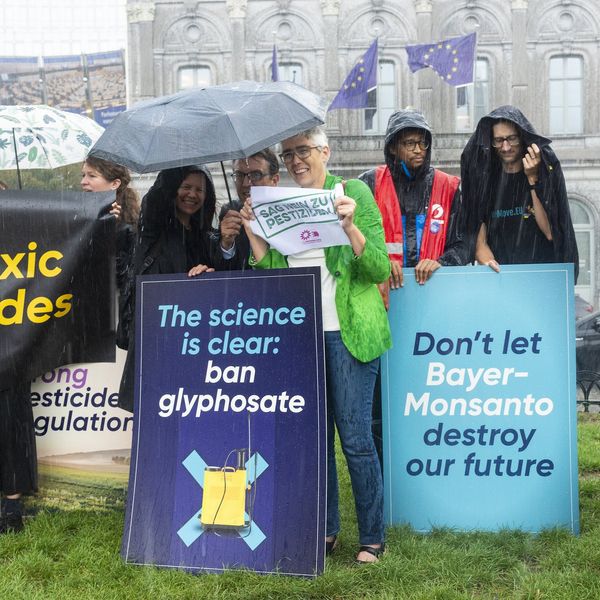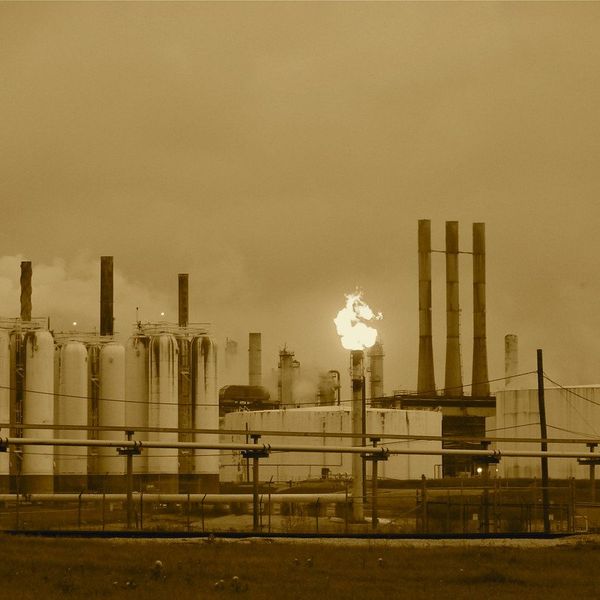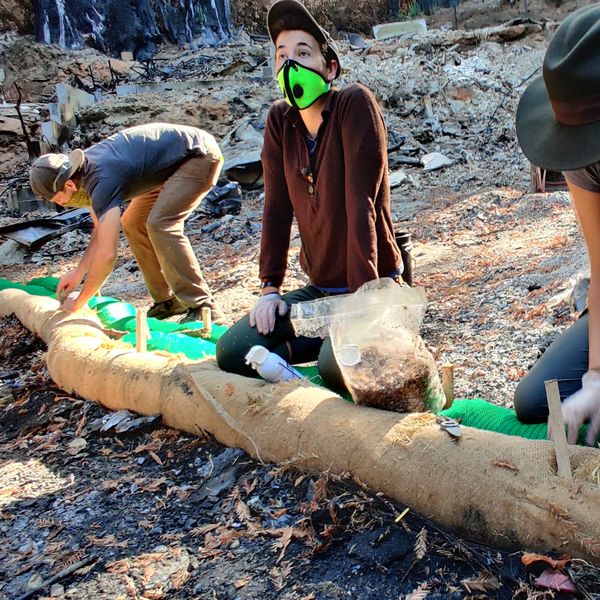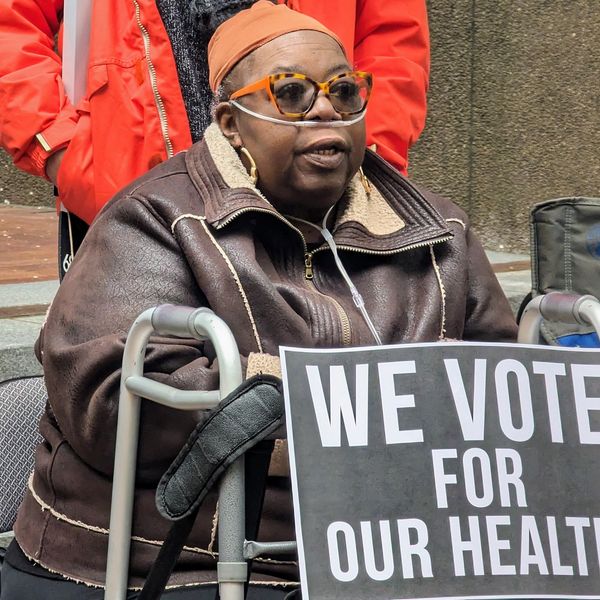COVID-19 is having disproportionate impacts on our nation's two million farmworkers, who as essential workers continue to toil in the fields despite numerous deadly outbreaks and no federal COVID-related workplace protections.
COVID-19 has pulled back the veil on the strikingly poor workplace conditions of these essential workers, built by decades of insufficient farmworker health and safety policy, poor immigration policy, and limited health care access. As a consequence, at least 86,900 food workers have tested positive for COVID-19 – but with uneven data collection, exacerbated by businesses' lack of transparency over workplace outbreaks and workers' avoidance of testing due to fear of losing income, the figures we have are likely an underestimate.
This op-ed is also available in Spanish
A new analysis does note that each additional percentage point of farmworkers per overall population in a county was associated with 5.79 more deaths from COVID-19 – but did not contribute to more deaths per 100,000 residents. The researchers concluded, "farmworkers may face unique risks of COVID-19 beyond issues of language, insurance, or economics."
The Biden Administration must issue a federal standard to protect workers from COVID-19 that includes farmworkers. But beyond COVID-specific actions for farmworkers, the Biden Administration also needs to urgently address the underlying health and workplace conditions that pre-dated COVID.
A dangerous regulatory rollback
One key way the Biden Administration can start to correct the course is by enforcing and safeguarding the Worker Protection Standard (WPS), the main federal regulation that protects workers from pesticide exposure. Pesticide exposure weakens the respiratory, immune, and nervous systems—exacerbating farmworkers' COVID-19 risks.
Unfortunately, the Environmental Protection Agency (EPA) under the Trump Administration made various efforts to weaken or eliminate key provisions of the WPS, which had been revised and improved at the end of the Obama Administration. The WPS is an outlier in occupational health standards –because pesticides, although they are a workplace hazard, are regulated by the EPA, instead of by the Occupational Safety and Health Administration (OSHA), which covers occupational health in every other industry. This is just one example of how farmworkers are exempted from basic protections afforded to other workers.
Related: New country, same oppression—it's time to bolster farmworkers' rights
Many of the Trump Administration's efforts to weaken the WPS were thwarted by advocacy and litigation by environmental and farmworker groups. However, one of the Trump Administration's proposed rollbacks of the WPS remains: the gutting of the Application Exclusion Zone (AEZ), which required pesticide handlers to stop applying pesticides if someone is near the area being sprayed. If the final Trump AEZ rule goes into effect, farmworkers in neighboring fields, children in school playgrounds or in their backyards, and rural residents going about their day may be in close proximity to where pesticides are being sprayed, as long as they're not on the same property, without any requirement that the applicator suspend spraying. More than 1 billion pounds of pesticides, designed to kill insects, weeds, and other pests, are applied to U.S. agricultural fields every year. In addition to acute poisonings, pesticides are also associated with long-term health harms including various cancers, developmental and reproductive harm, and neurological damage, for both farmworkers and community members who are chronically exposed to pesticides.
In December 2020, Farmworker Justice and Earthjustice, acting on behalf of a coalition of groups including Migrant Clinicians Network, sued the EPA to stop these changes. An injunction is currently in place preventing the changes from being implemented as the case proceeds – but the Biden Administration has a responsibility to protect these workers, rather than rely on courts. And the issue of pesticide drift on nearby properties is just one of the many challenges that farmworkers face when it comes to pesticide exposure.An opportunity to right wrongs

Pesticide spray in Utah. Pesticide exposure is associated with various cancers, developmental and reproductive harm, and neurological damage. (Credit: Aqua Mechanical/flickr)
These hard-working farmworkers, upon whom we all depend for the food we eat, deserve immediate and effective protections. The new Administration has a unique opportunity to take advantage of renewed public understanding of the exploitation of farmworkers, to provide long-overdue workplace protections to keep essential workers safe, and to transform our food systems to ensure healthy workplaces, neighborhoods, and the environment, by:
- Rejecting the Trump Administration's attempt to weaken the Application Exclusion Zone requirements;
- Increasing the monitoring and enforcement of the WPS, including, but not limited to, provisions such as the minimum age of 18 for applying pesticides, adequate training for workers in a language that they understand, and worker access to information about pesticides being applied;
- Requiring drift protections on pesticide labels for drift-prone pesticides, to better protect workers, bystanders, and communities;
- Requiring that all pesticide label instructions be written in Spanish and/or other languages spoken by workers so they have the information they need to protect themselves and their families;
- Banning highly toxic pesticides such as chlorpyrifos;
- Using accurate scientific methods for determining pesticide risk, including taking into account farmworkers' potential long-term exposure, when making determinations about pesticide safety and the registration of pesticide products;
- Including farmworkers and farmworker-serving organizations as key stakeholders at EPA, with a focus on environmental justice.
These are just some of the essential steps the new Administration can take to protect farmworkers from the extreme hazards of their workplaces. Much more needs to be done about the myriad factors that negatively impact farmworker health, like poverty, immigration status, language barriers, and fear of retaliation.
COVID-19 has shown that a strong public health system and a functional food system require basic health and human rights for all of our neighbors, especially those typically left out. The Biden Administration has a duty and an opportunity to improve our systems – and consequently improve our nation's health and well-being.
Amy K. Liebman is Director of Environmental and Occupational Health for Migrant Clinicians Network, a nonprofit focused on creating practical solutions at the intersection of vulnerability, migration, and health. Iris Figueroa is the Director of Economic and Environmental Justice for Farmworker Justice, a nonprofit that seeks to empower migrant and seasonal farmworkers to improve their living and working conditions, immigration status, health, occupational safety, and access to justice.
Banner photo: Farmworkers hand cutting and field packing celery in Salinas Valley, California. (Credit: Dan Long/flickr)
- LISTEN: Nayamin Martinez on organizing for farmworker justice - EHN ›
- LISTEN: Annie Hoang on advocating for safer workplaces - EHN ›
- LISTEN: Annie Hoang on advocating for safer workplaces - EHN ›
- How workers’ rights and environmental justice movements collide in California’s Central Valley - EHN ›
- Mobilizing against pesticides from the ground up - EHN ›
- Adrift: Communities on the front lines of pesticide exposure fight for change - EHN ›
- On the frontlines of pesticide exposure - EHN ›
- Radio Bilingüe brings pesticide reporting by Environmental Health News and palabra to new audiences - EHN ›
- LISTEN: Lisbeth Iglesias-Ríos on advocating for migrant farmworkers’ rights - EHN ›
- How we’re failing to protect people from pesticides - EHN ›


















